Heating and mechanical system
Changes in technology, code requirements and utilities price increase are resulting in new designs for mechanical systems. Today we live in larger homes than we did in the past. Over the last forty years the average home in the US has increased by 1000 sq ft according to US Census Bureau. Bigger homes require more energy for heating and cooling and we are experiencing bigger expenses for heating and cooling. On top of that, we are spending more time indoors, requiring space to be conditioned for longer periods of time.
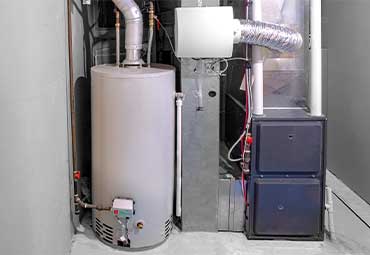
Several technologies have been developed and are gaining traction for home heating and air conditioning. Most common heating system in the mountains is either a gas furnace forced air system or gas boiler radiant heat system. New high efficiency gas furnaces and boilers have ability to modulate the flame and recover heat from the condensate in the exhaust. Modulating flame allows them to reduce heat output when demand is lower, thus reducing the number of start cycles and reducing the amount of the heat that is lost through the exhaust. Another benefit from condensing units is that it removes some of the heat from the exhaust by condensing water vapor in the exhaust gas. These units have ratings up to 95% and are considered the best choice on the market. Perhaps the biggest benefit of a forced air system is its ability to filter the air. There are large filters with high MERV ratings available on the market, but sadly they are very seldom installed and used.
Mini splits
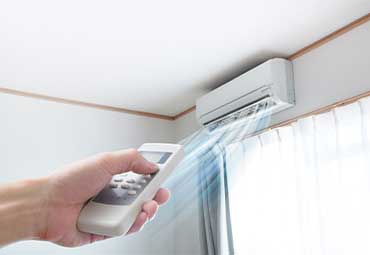
When it comes to different technologies most often mentioned is the mini split heat pump system. This system features a heat pump compressor that can both heat and cool and multiple distribution heads that distribute conditioned air indoors. This system is very promising in mild climate zones. Biggest disadvantage in the mountains is that most systems are rated for outdoor temperature above -15F. This means that the below freezing system has greatly reduced output and that it will shut down below -15F. While the system has very high efficiencies when outdoor temperature is higher, if you live in Steamboat Springs or Routt County, there is a necessity for a separate heating system for very cold days. If you already have a heating system and you are adding air conditioning to the home, mini splits are a good choice. You can utilize heat it can produce with efficiencies above 350% and then supplement it with existing, less efficient systems. There are thermostats on the market that can simultaneously control mini split units and traditional heating systems. If you are looking for a system for a brand new home in the mountains, then there might be better options.
Hybrid systems
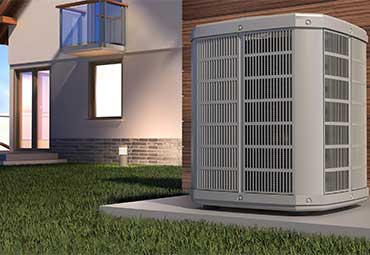
To take advantage of the benefits that are seen with mini split units and to easily provide heat when temperature is very cold, a hybrid system has been developed. Hybrid system is a central air system that is utilizing an air source heat pump when temperatures allow and a high efficiency gas furnace that supplements heat in cold weather or takes over the heating when heat pump shuts down due to outdoor air being too cold. This set point on better units is -15F. Switchover from heat pump to furnace is automatic and is controlled either by multi stage thermostat or by the heat pump itself. It is possible to use resistive electric heat elements for supplemental heat instead of gas furnace and most manufacturers integrate this solution. While electric heat strips are fairly cheap, they are expensive to operate. In climates where electric auxiliary heat will operate occasionally and not for long periods of time this could be a good option. In our climate zone, the expense of operating an electric heat strip would quickly become dominant during coldest months, so we opt for a gas furnace that has a lower operating expense than the heat strip. All above mentioned heat pumps are air source heat pumps.
Hybrid hydronic heat pump systems
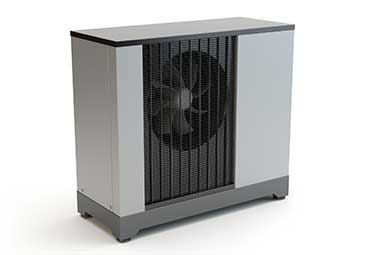
Radiant floor heat is desirable in mountain areas. Lots of higher end homes have it installed and is a standard feature for them. While radiant floor heat might not be the best option for high performance homes, it is often requested. There is an increased number of Air-To-Water heat pumps available on the market. These units operate similarly like heat pumps we are used to except for warming and cooling the air, they are warming and cooling the water. This water is used for radiant heating in winter and for cooling in the summer. Most professionals warn against using cold water in the floor for cooling. There is a potential for condensation if the floor is cooled too fast or too much, especially in warm and humid zones. While this can be controlled, a safer option is to use a water-to-air heat exchanger coil and provide cooling using a central air system. Some Air-To-Water heat pump units are equipped with desuperheater that allows for heat extracted during the cooling season to be stored in domestic hot water heaters. This greatly reduces energy requirements for domestic hot water heating, but most Air-To-Water heat pump units available on the market are not able to do this. Another important consideration regarding Air-To-Water heat pumps is the maximum temperature they can provide. It is usually lower than what the boiler can do. There are some models that are able to provide higher temperatures that are needed for cast iron radiators and hydronic radiators. If you are looking into retrofitting this type of system with an Air-To-Water heat pump, the best is to reduce the output temperature of your existing boiler to the level you can get out of the heat pump you have selected and test if you will be able to provide enough heat for the home. This test will need to be done during the coldest winter months, so plan far ahead.
Geothermal heat pump
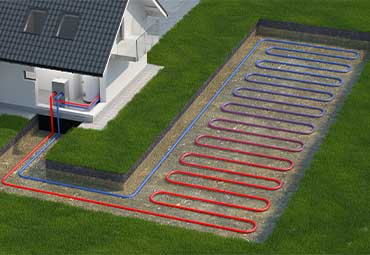
Geothermal heat pumps have been gaining traction since the mid 80s. They are both Water-to-Air and Water-to-Water heat pumps that transfer the heat from the ground loop water to heat the home. These systems are suitable for radiant floor heating and for central air. Greatest benefit of a geothermal system is that it is not affected by the outside temperature and it’s coefficient of performance stays between 350% and 450%. Geothermal systems rely on relatively constant ground temperature and if designed correctly are not affected by the outdoor temperature. This makes geothermal systems very suitable for heating in the mountains. Biggest drawback of a geothermal system is installation cost. It requires water loops to be installed in deep trenches or in deep wells in order to be able to extract heat from the earth. Efficiency is better if wells are used instead of trenches, but trenches are easier to install if there is room available. Geothermal are all electric units that will provide for both heating and cooling. Cooling can be provided through central air registers like with the Air-to-Air or Air-to-Water heat pump system. Most geothermal systems have desuperheater that make hot water while the system is running. When extracted heat from the home is stored in a hot water tank there is great energy saving. Some of the geothermal systems claim that they can provide for up to 100% of domestic hot water, but they all recommend auxiliary hot water heating device. It is important to note that if a geothermal system does not have enough capacity to provide enough BTUs during coldest days that either electric heat strip or gas backup can be used to increase its output. Sizing of the system is important as if the electric heat strip takes over a significant amount of heating, financial benefits will be lost.
Resistive electric heating system
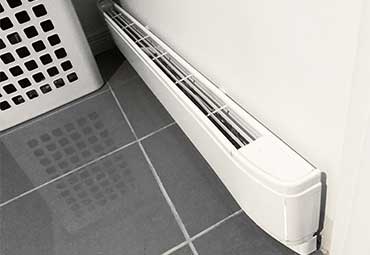
The only heating systems that are left are resistive heating systems and oil boiler systems. Most common ones are electric baseboards. They were very common in the 70s and lots of them are still in use today. These systems are very cheap to install, but not so cheap to operate. Their efficiency is at 100%, but the cost of the electricity is what makes them expensive. Another less common electric heat strip option is a forced air system that is using a large electric heat strip or heat coil to produce the heat. It’s efficiency is the same as with electric baseboards at 100%, but they can be even more expensive to run than electric baseboards. Reason is increased air leaks in the heating duct that promote more air changes and more cold air to enter the home. Oil furnaces and boilers are not common in our area due to availability of natural gas in urban areas and preference towards propane in rural areas.
As of lately, some designers are suggesting retrofitting electric baseboard heaters with infra red electric heaters. These heaters are installed high on the walls and instead of heating air, they use infra red rays to heat objects in front of them. They are considered very efficient and manufacturers claim energy savings due to the fact that objects are heated directly resulting in sensation of warmth before all interior air is heated up. Since these heaters radiate the heat, they are not affected by the air movements and drafts.
Solar hot water heaters
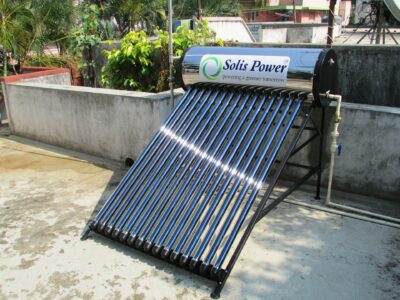
Most people are familiar with solar photoelectric panels. When it comes to solar hot water heaters their benefit in hot states like Arizona are obvious, but not in Colorado. Unfortunately this can not be further from the truth. New evacuated vacuum tube solar collectors will produce hot water on any sunny day, even if outdoor temperature is well below freezing. In cold climates like ours antifreeze solution is circulated through collector and heat collected is being used for domestic hot water and for heating. They implement very well with air-to-water or geothermal heat pumps and radiant floor systems. Based on the number of tubes this units can offset significant amount of heat needed for radiant floor heating systema and they are scalable so additional units can be added to the same system within the reason. Unfortunately this units are not very popular, not because of lack of performance, but due to the lack of education and knowledge regarding their availability and effectivness.


